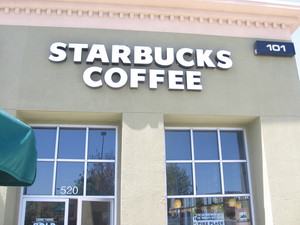If you think your yard is to shady for a vegetable garden, you just might be wrong. I know I almost made the same mistake. When I moved around two years ago, I thought I was in serious trouble because the only available garden spot received only a couple of hours of sun a day. So, I resigned myself to container gardening, which led me to discover a number of things I could grow in a container that I had never considered before. However, my father who ran a greenhouse and tended an acre garden when I was growing up, assured me that some of my favorites would do just fine in my garden space. So I started talking to garden center employees and trying various plants out to see what really would work in my garden. Here is what I learned in my experimenting, which will save you from some of the mistakes I made.
As long as the area you want to plant in receives a couple of hours in the sun, there are many delicious crops you can grow. You just need to pick the right plants, do the necessary work, and enjoy a magnificent harvest! You cannot expect sun-loving tomatoes or peppers to thrive in the shady garden bed, but you can grow them in any sunny spot, in containers. Instead, focus on growing fresh greens, rhubarb, broccoli, root vegetables, and herbs that are best suited for the conditions you can provide.I have the perfect garden spot, but because of fencing lack the sunlight for some of my favorite vegetables, which is what led me to find crops and flowers that would thrive in my garden.
Leafy greens like lettuce and spinach do quite well in a shady garden. In fact, this year I cannot keep up with my lettuce. If you want a great salad garden, I suggest picking a garden area that only receives two to three hours of sun and get planting. Radishes, kale, lettuce, spinach, and broccoli all taste great together or separate with a light dressing. They will also do well to fill up a shady garden.
Vegetables that go great as sides or ingredients in pasta salads are in this list as well. Beets, turnips, spinach, and broccoli are as good on their own, as a side, or paired with pasta or rice, as they are in other salads. Other root vegetables like sweet potatoes and potatoes can do very well here as well, but they need three to four hours of sun, rather than the two or so hours that your shadiest spot might receive. My potatoes are currently thriving in a spot shaded by a lilac bush.
If you would rather stick to growing herbs, you can still have a hardy garden in the shade. Garlic, chives, any variety of mint, and parsley all thrive in a less than sunny garden. However, be forewarned that many of these herbs might do a little too well and start to spread beyond their allocated area. Mints are particularly invasive and will take over your garden, and even your lawn, if left unchecked. I love mint, and have several varieties growing. However, I keep them all container bound. If you want to grow mint in a garden setting, I highly suggest planting the mint, container and all. This will give you the garden look, and help contain the mint. You will still need to keep an eye on it, but it is a safer option than just planting it in your garden and hoping to control it.
If you are a baker looking to expand your pie palate, why not grow your own rhubarb in your shady garden? Everyone has heard of strawberry rhubarb pie, but there are so many uses of rhubarb that you can joyfully explore if you had your own homegrown supply. Try new combinations, make jams and jellies, and try new desserts. It is the idea of discovering new flavor combinations, dishes, and desserts that has me planting new things every year. Less familiar, but tasty, plants can do very well in a shadier garden. You can use this endeavor as an excuse to grow something new and unusual. Kal, kohlrabi, and salsify might not be in your normal repertoire but what better excuse to try something new than the fact you grew it yourself.
Also, you are far from confined to the plants that I have mentioned here. These are just plants that I have grown myself, or seen thrive in gardens which receive little sun. There are many more vegetables, fruits, herbs, and companion plants that will grow, and even thrive, in a shady garden. Before planting anything, read the information on the seed packet, or on the plat’s label. When in doubt, ask for help from an employee at the nursery or garden center you are shopping in, or ask a fellow gardener what has done well for them.




